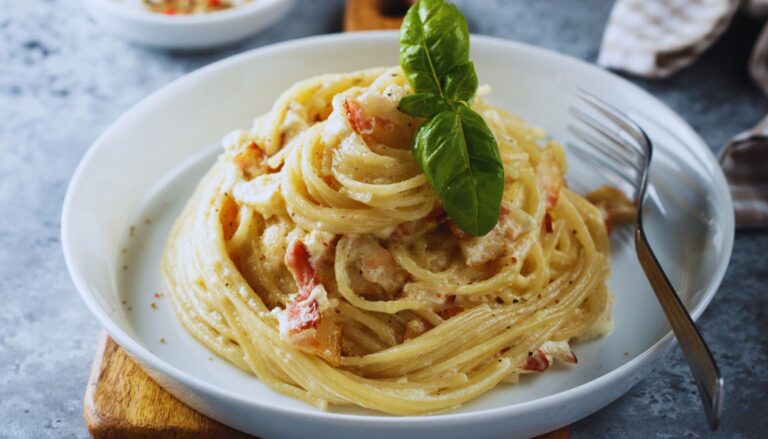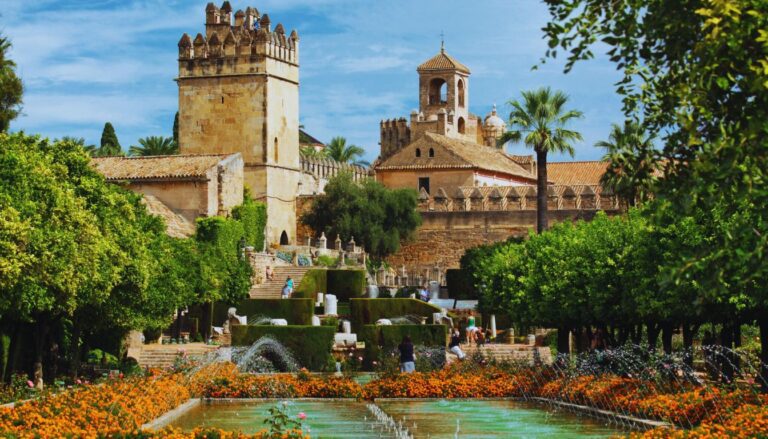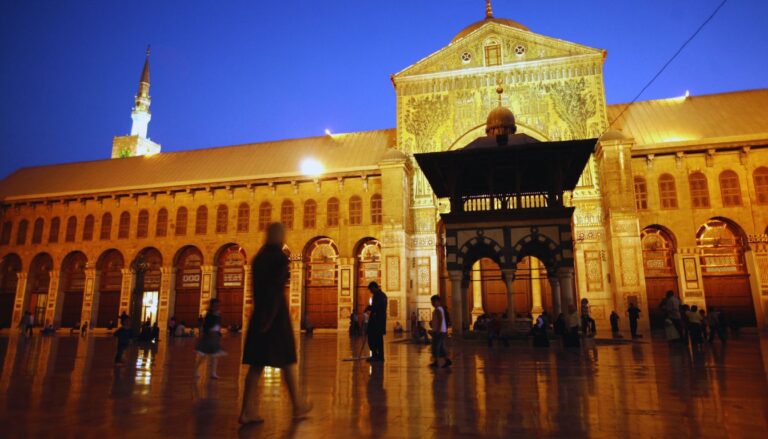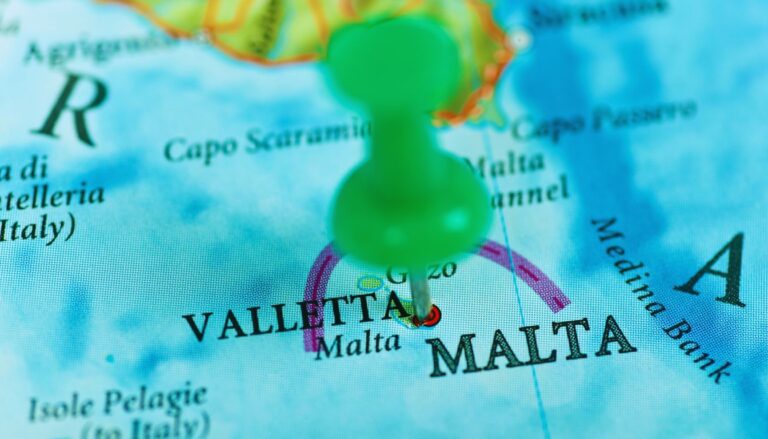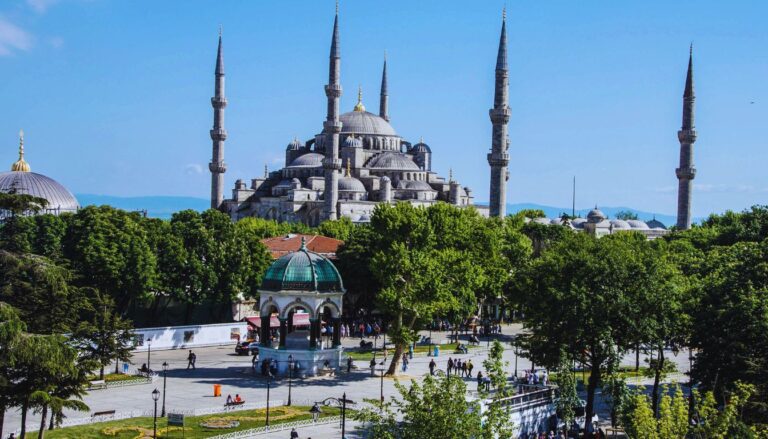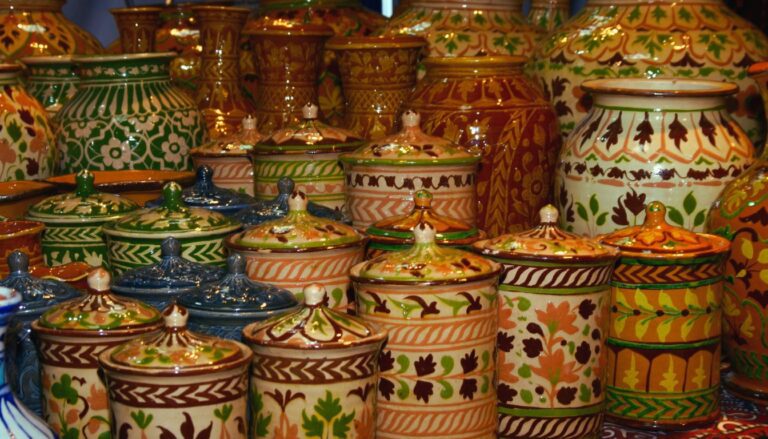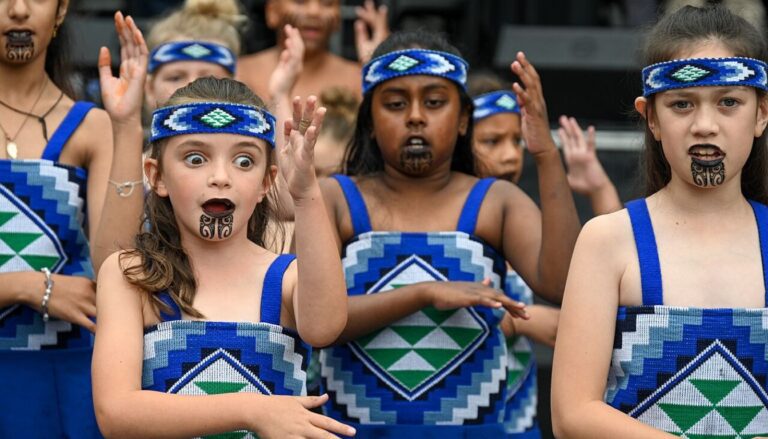Nestled in the heart of the Mediterranean, the island of Corsica is home to a unique and mesmerizing vocal tradition known as Corsican polyphonic singing. This ancient art form, passed down through generations, has captivated listeners around the world with its haunting harmonies and rich cultural significance.
Corsican polyphonic singing, or “Cantu in Paghjella” in the Corsican language, is a style of a cappella vocal music performed by two to five male voices. The term “polyphonic” refers to the multiple, independent melody lines that interweave to create a complex and beautiful harmonic tapestry.
This vocal tradition is more than just a form of music; it’s a vital part of Corsican identity, deeply rooted in the island’s history, language, and way of life. Its importance has been recognized globally, with UNESCO inscribing Corsican polyphonic singing on its Representative List of the Intangible Cultural Heritage of Humanity in 2009.
In this article, we’ll explore the rich world of Corsican polyphonic singing, from its historical roots to its modern-day practice and global influence. Whether you’re a music enthusiast, a cultural explorer, or simply curious about unique vocal traditions, the story of Corsican polyphony offers a fascinating journey into a treasure of Mediterranean folklore.
Table of Contents
Historical Background of the Tradition
The origins of Corsican polyphonic singing stretch back centuries, intertwining with the complex history of the island itself. While the exact beginnings of this vocal tradition are lost to time, historians and musicologists believe it has roots that go back at least to the Middle Ages, if not earlier.
Key points in the historical development of Corsican polyphony include:
- Ancient Influences: Some scholars suggest that elements of Corsican polyphony may have origins in ancient Greek or Byzantine chants, reflecting the island’s position at the crossroads of various Mediterranean cultures.
- Religious Connections: The development of Corsican polyphony is closely linked to religious practices. Many early polyphonic songs were religious in nature, sung during church services or religious processions.
- Secular Evolution: Over time, the tradition expanded beyond religious contexts. Polyphonic singing became a part of everyday life, used to accompany work, celebrate important life events, and express communal identity.
- Oral Tradition: For centuries, Corsican polyphonic singing was passed down orally from generation to generation. This oral tradition helped preserve the unique characteristics of the music while allowing for regional variations.
- Periods of Decline: Like many traditional art forms, Corsican polyphony faced periods of decline, particularly in the 20th century as modernization and outside cultural influences reached the island.
- Revival Movements: In the latter half of the 20th century, there was a renewed interest in Corsican traditional culture, including polyphonic singing. This revival helped bring the tradition to a wider audience and ensured its continued practice.
Understanding this historical background helps to appreciate the deep cultural roots of Corsican polyphonic singing and its importance to Corsican identity. The resilience of this tradition through centuries of change speaks to its profound significance in Corsican culture.
The Structure and Styles of Corsican Polyphony
Corsican polyphonic singing is characterized by its unique structure and various styles. Understanding these elements helps to appreciate the complexity and beauty of this vocal tradition.
Basic Structure:
Corsican polyphony typically involves three vocal parts:
- U Bassu (The Bass): This is the lowest voice, providing the foundation of the harmony.
- A Seconda (The Second): This middle voice often carries the main melody.
- A Terza (The Third): The highest voice, which ornaments the melody with elaborate vocal flourishes.
In some cases, a fourth or even fifth voice may be added, but the three-part structure remains the core of Corsican polyphony.
Styles of Corsican Polyphony:
There are several styles of Corsican polyphonic singing, each with its own characteristics:
- Paghjella: This is the most well-known and complex style. It’s typically performed by three male voices and is considered the pinnacle of Corsican polyphonic art.
- Terzetti: Similar to paghjella but usually more syllabic (one note per syllable) and with less ornamentation.
- Madrigale: Influenced by Italian madrigals, this style is more melodic and often includes love themes.
- Lamenti: These are laments, often performed at funerals or to commemorate tragic events.
- Chjama è Rispondi: A form of musical dialogue or debate, where singers improvise verses on a given theme.
These styles can vary regionally across Corsica, with different areas developing their own distinctive sounds and techniques. This diversity adds to the richness of the Corsican polyphonic tradition.
The structure and styles of Corsican polyphony create a unique sound world, one that can be deeply moving even to listeners unfamiliar with the tradition. The interplay between the voices, the rich harmonies, and the varied styles all contribute to the enduring appeal of this ancient vocal art.
Vocal Techniques in Corsican Polyphonic Singing
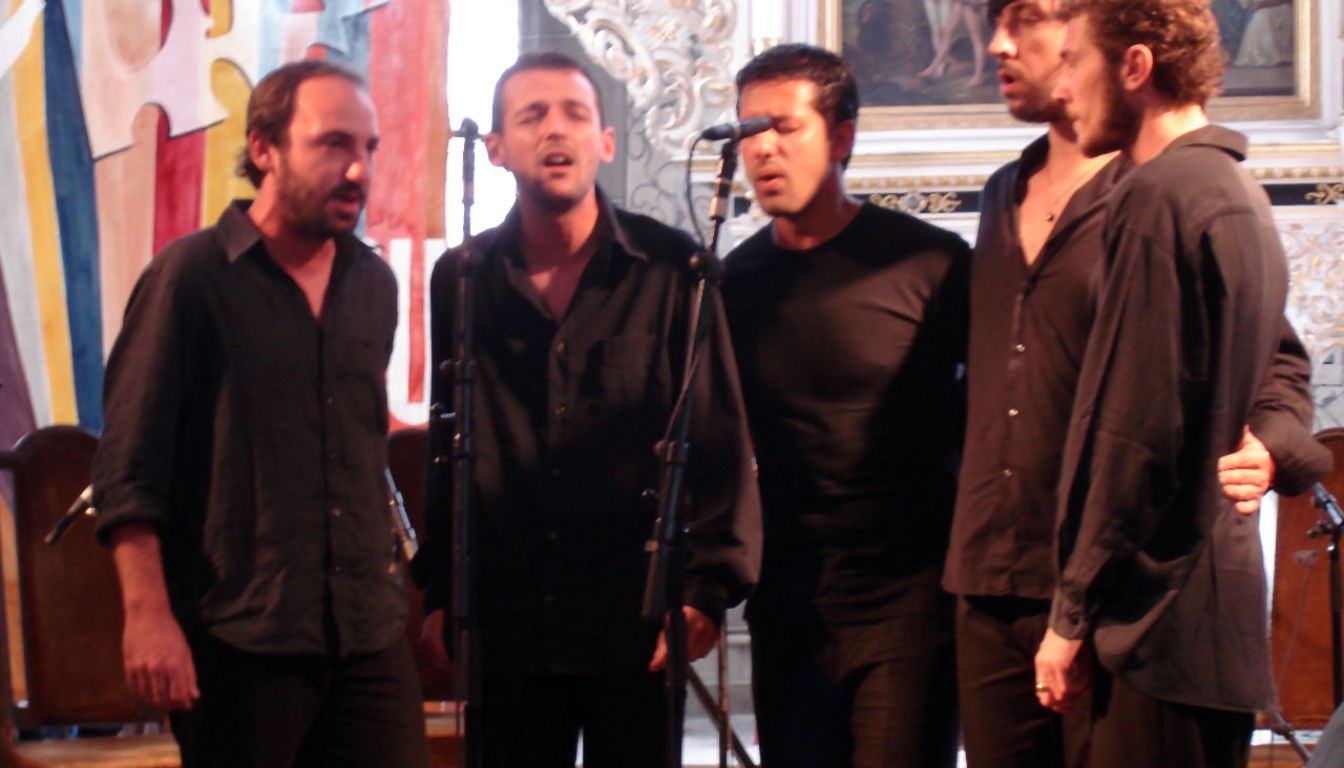
Corsican polyphonic singing employs a range of distinctive vocal techniques that contribute to its unique sound. These techniques have been refined over centuries and require considerable skill and practice to master.
Key vocal techniques in Corsican polyphony include:
- Melisma: This is the technique of singing multiple notes on a single syllable of text. It’s particularly prominent in the highest voice (a terza), which often embellishes the melody with intricate vocal runs.
- Drone: The lowest voice (u bassu) often maintains a drone-like quality, providing a steady harmonic foundation for the other voices.
- Close Harmonies: Corsican polyphony is known for its use of close harmonies, where the voices sing notes that are very near to each other in pitch. This creates a rich, sometimes dissonant sound that is characteristic of the style.
- Vibrato Control: Unlike in some Western classical traditions, vibrato is used sparingly in Corsican polyphony. Singers often employ a straighter tone to achieve better blend and to emphasize the harmonic structure.
- Nasalization: Some styles of Corsican singing, particularly in certain regions, employ a degree of nasalization, where some of the sound resonates in the nasal cavity. This adds a distinctive timbre to the voice.
- Rhythmic Flexibility: Corsican polyphony often features a flexible approach to rhythm, with singers subtly adjusting the timing to enhance expression or to accommodate the natural rhythm of the text.
- Vocal Ornamentation: Especially in the higher voices, singers use various forms of ornamentation, including trills, mordents, and grace notes, to add complexity and expression to the melody.
- Call and Response: In some styles, like the chjama è rispondi, singers engage in a form of musical dialogue, requiring quick thinking and improvisational skills.
These techniques combine to create the distinctive sound of Corsican polyphony. Mastering them requires not only vocal skill but also a deep understanding of the tradition and its cultural context. The complexity of these techniques is one reason why Corsican polyphonic singing is considered a high art form, requiring years of practice and cultural immersion to perfect.
The Role of Corsican Language in Polyphonic Songs
The Corsican language plays a crucial role in the island’s polyphonic singing tradition. As the primary language of Corsica, it is intrinsically linked to the cultural identity expressed through this vocal art form. Understanding the relationship between the Corsican language and polyphonic singing helps to appreciate the depth and authenticity of this tradition.
Key aspects of the role of Corsican language in polyphonic songs include:
- Linguistic Preservation: Corsican polyphonic songs serve as a vehicle for preserving and transmitting the Corsican language. Many songs contain archaic words or expressions that might otherwise have been lost.
- Poetic Expression: The Corsican language, with its rich vocabulary and expressive capabilities, allows for nuanced poetic expression in the songs. The language’s rhythms and sounds are integral to the musical composition.
- Cultural Context: The use of Corsican in these songs helps to root them firmly in the island’s cultural context. The language carries with it a wealth of cultural references and shared experiences that resonate with Corsican listeners.
- Phonetic Qualities: The specific sounds of the Corsican language, including its vowels and consonants, contribute to the unique timbre of Corsican polyphonic singing.
- Textual Improvisation: In styles like the chjama è rispondi, singers improvise verses in Corsican, showcasing not only their musical skills but also their command of the language and its poetic forms.
- Regional Variations: Different dialects of Corsican are reflected in the polyphonic traditions of various regions of the island, adding to the diversity of the art form.
- Emotional Resonance: For Corsican speakers, hearing their language in these ancient song forms can evoke deep emotional responses, connecting them to their heritage and identity.
- Challenges of Translation: The deep connection between the Corsican language and the songs presents challenges for non-Corsican speakers who wish to perform or fully understand the tradition. This has led to debates about authenticity and cultural appropriation in the global spread of Corsican polyphony.
The intricate relationship between the Corsican language and polyphonic singing underscores the importance of linguistic preservation in maintaining cultural traditions. As efforts continue to keep the Corsican language alive, polyphonic singing serves as both a motivation and a means for younger generations to engage with their linguistic heritage.
Themes and Subjects in Corsican Polyphonic Music
Corsican polyphonic songs cover a wide range of themes and subjects, reflecting the rich tapestry of Corsican life, history, and culture. These themes provide insight into the values, experiences, and worldview of the Corsican people. Here are some of the most common themes found in Corsican polyphonic music:
- Nature and Landscape: Many songs celebrate the beauty of Corsica’s natural environment, from its rugged mountains to its pristine beaches. These songs often use natural imagery as metaphors for human experiences.
- Love and Romance: Like many musical traditions, Corsican polyphony includes numerous love songs. These can range from expressions of tender affection to tales of heartbreak and longing.
- Death and Mourning: Lamenti, or laments, form an important part of the repertoire. These songs express grief and honor the deceased, often recounting their lives and virtues.
- Religious and Spiritual Themes: Given the historical connection to religious practice, many songs have spiritual or religious themes. These might include hymns, prayers, or songs for religious festivals.
- Historical Events: Corsican history, including battles, invasions, and periods of resistance, is commemorated in many polyphonic songs. These serve as a form of oral history, passing down stories of the island’s past.
- Cultural Identity: Songs that celebrate Corsican identity, traditions, and way of life are common. These often emphasize the unique aspects of Corsican culture and the islanders’ strong sense of belonging.
- Work and Daily Life: Some songs describe or accompany traditional work activities, such as harvesting or shepherding. These provide glimpses into historical Corsican daily life.
- Social Commentary: Particularly in more contemporary compositions, polyphonic songs may address current social or political issues affecting Corsica.
- Heroic Tales: Stories of Corsican heroes, both historical and legendary, are recounted in some songs, often emphasizing values like bravery, honor, and loyalty.
- Exile and Longing for Home: Given Corsica’s history of emigration, songs about leaving the island and longing to return are a poignant part of the repertoire.
These themes are not mutually exclusive, and many songs interweave multiple subjects. The depth and variety of themes in Corsican polyphonic music contribute to its enduring relevance and emotional power. Whether expressing joy, sorrow, love, or pride in cultural identity, these songs continue to resonate with listeners, offering a window into the heart of Corsican culture.
UNESCO Recognition and Cultural Significance
The global importance of Corsican polyphonic singing was officially recognized in 2009 when UNESCO (United Nations Educational, Scientific and Cultural Organization) inscribed it on the Representative List of the Intangible Cultural Heritage of Humanity. This recognition has played a significant role in preserving and promoting this unique vocal tradition.
UNESCO Recognition:
UNESCO’s decision to include Corsican polyphonic singing on its list was based on several factors:
- Cultural Value: The tradition represents a vital aspect of Corsican cultural identity.
- Historical Significance: It has been passed down through generations, preserving ancient musical and linguistic elements.
- Artistic Merit: The complexity and beauty of the singing style were recognized as a unique form of artistic expression.
- Risk of Disappearance: Like many traditional art forms, Corsican polyphony faced challenges in modern times, making its preservation crucial.
Cultural Significance:
The UNESCO recognition underscores the cultural significance of Corsican polyphonic singing:
- Identity Preservation: It helps maintain a strong sense of Corsican identity in the face of globalization and cultural homogenization.
- Linguistic Importance: The tradition plays a crucial role in preserving the Corsican language.
- Community Cohesion: Polyphonic singing often brings communities together, strengthening social bonds.
- Intergenerational Transmission: It provides a means for older generations to pass on cultural knowledge to younger ones.
- Cultural Tourism: The UNESCO status has increased interest in Corsican culture, potentially benefiting the island’s economy through cultural tourism.
- Academic Interest: The recognition has sparked increased scholarly interest in Corsican music and culture.
- Pride and Validation: For Corsicans, the UNESCO status provides a sense of pride and international validation of their cultural heritage.
The UNESCO recognition has had practical impacts as well. It has led to increased funding and support for preservation efforts, educational programs, and cultural exchanges. It has also raised awareness about the need to protect and promote other forms of intangible cultural heritage around the world.
However, with recognition comes responsibility. There is an ongoing challenge to balance the preservation of authenticity with the inevitable changes that come with wider recognition and practice. The Corsican community, along with cultural institutions and UNESCO, continue to work together to ensure that this valuable tradition remains vibrant and meaningful for future generations.
Modern Preservation and Transmission Efforts
Educational Programs:
Schools in Corsica often include polyphonic singing in their music curriculum.
Workshops and master classes are organized for both locals and visitors interested in learning the tradition.
Cultural Centers and Associations:
Organizations like the Centre d’Art Polyphonique de Corse provide training and promote Corsican polyphonic singing.
Local cultural associations organize events and classes to keep the tradition alive in communities.
Festivals and Competitions:
Annual festivals celebrate Corsican polyphonic singing, providing platforms for performers and attracting new audiences.
Competitions encourage young singers to engage with the tradition and showcase their skills.
Documentation and Research:
Ethnomusicologists and cultural institutions are working to record and document various styles of Corsican polyphony.
Research projects aim to understand the historical development and regional variations of the tradition.
Digital Preservation:
Online archives and databases are being created to store recordings, lyrics, and information about Corsican polyphonic singing.
Social media and streaming platforms help to share the music with a global audience.
Intergenerational Transmission:
Efforts are made to encourage older singers to mentor younger generations.
Family-based transmission is still important, with knowledge passed down within households.
Government Support:
The Corsican government provides funding for cultural programs that include polyphonic singing.
National and EU-level cultural heritage programs also offer support.
International Collaborations:
Exchanges with other polyphonic traditions around the world help to raise awareness and share best practices for preservation.
Integration with Contemporary Culture:
Efforts to blend traditional polyphonic singing with modern musical styles help keep it relevant to younger audiences.
These preservation and transmission efforts face challenges, including the pull of mainstream popular culture and the decline of traditional Corsican rural life. However, the passion of practitioners and the support of cultural institutions provide hope for the continued vitality of this unique vocal tradition.
Corsican Polyphony in Contemporary Music
While deeply rooted in tradition, Corsican polyphonic singing has not remained static. It has found new life and expression in contemporary music, bridging the gap between ancient practices and modern artistic sensibilities.
Fusion with Modern Genres:
Some Corsican musicians have successfully blended traditional polyphonic techniques with genres like rock, jazz, and electronic music.
This fusion helps to introduce the tradition to new, younger audiences.
World Music Scene:
Corsican polyphonic groups have gained recognition on the world music stage, performing at international festivals and collaborating with artists from other traditions.
Film and Television Soundtracks:
The distinctive sound of Corsican polyphony has been used in film and TV soundtracks, bringing it to a wider audience.
Collaboration with Classical Musicians:
Some classical composers and performers have incorporated elements of Corsican polyphony into their work, creating unique cross-genre pieces.
Innovative Arrangements:
Contemporary Corsican musicians are experimenting with new arrangements of traditional songs, sometimes incorporating modern instruments while maintaining the core polyphonic structure.
Female Voices:
While traditionally a male art form, some contemporary groups now include female voices, expanding the range and timbre of Corsican polyphony.
Social and Political Expression:
Modern Corsican polyphonic songs often address contemporary social and political issues, keeping the tradition relevant to current Corsican life.
Digital Production:
Some artists are using studio techniques to layer voices and create new polyphonic textures, while still drawing on traditional techniques.
These contemporary expressions of Corsican polyphony demonstrate the adaptability and enduring appeal of the tradition. By finding new contexts and forms of expression, Corsican polyphonic singing continues to evolve while maintaining its distinctive character and cultural significance.
Learning and Experiencing Corsican Polyphonic Singing
For those interested in learning more about or experiencing Corsican polyphonic singing firsthand, there are several avenues to explore:
Workshops and Courses:
Cultural centers in Corsica offer workshops for beginners and advanced singers.
Some international music schools include Corsican polyphony in their world music programs.
Cultural Tourism:
Visiting Corsica during festival seasons provides opportunities to hear live performances.
Some tour operators offer music-focused trips to Corsica, including polyphonic singing experiences.
Listening Resources:
Numerous recordings of traditional and contemporary Corsican polyphonic music are available on streaming platforms and as CDs.
Online video platforms host performances and documentaries about the tradition.
Books and Academic Resources:
Several books have been written about Corsican music and culture, including detailed explorations of polyphonic singing.
Academic journals in ethnomusicology often feature articles on Corsican polyphony.
Local Performances:
In Corsica, churches, community centers, and local festivals often feature polyphonic singing performances.
Language Connection:
Learning the Corsican language can deepen understanding of the songs and their cultural context.
Digital Learning:
Some websites and apps offer introductory lessons in Corsican polyphonic singing techniques.
Collaborative Practice:
Joining or forming a singing group focused on world polyphonic traditions can provide a supportive environment for learning.
While truly mastering Corsican polyphonic singing requires immersion in the culture and years of practice, these resources offer ways for enthusiasts to begin exploring and appreciating this unique vocal tradition.
The Global Influence of Corsican Polyphony
Despite originating from a small Mediterranean island, Corsican polyphonic singing has had a notable impact on global music and culture:
Inspiration for Other Traditions:
The success of Corsican polyphony in preserving and promoting local culture has inspired other communities to revitalize their own vocal traditions.
Contributions to World Music:
Corsican polyphonic groups have become respected figures in the world music scene, influencing other artists and contributing to the global appreciation of diverse musical traditions.
Academic Interest:
The study of Corsican polyphony has contributed to broader understanding in fields like ethnomusicology, anthropology, and cultural studies.
Cultural Diplomacy:
Performances of Corsican polyphonic singing serve as a form of cultural diplomacy, representing Corsican and French culture on the world stage.
Vocal Technique Influence:
Some of the vocal techniques used in Corsican polyphony have been adopted or adapted by singers in other genres, particularly in world and experimental music.
Heritage Preservation Model:
The efforts to preserve and promote Corsican polyphonic singing serve as a model for other intangible cultural heritage preservation initiatives around the world.
Cross-Cultural Collaborations:
Corsican singers have engaged in collaborations with artists from various musical traditions, fostering intercultural dialogue and creative exchange.
Tourism Impact:
Interest in Corsican polyphony has contributed to cultural tourism on the island, influencing local economies and cultural policies.
The global influence of Corsican polyphonic singing demonstrates how a deeply local tradition can have far-reaching impacts, contributing to cultural diversity and inspiring appreciation for traditional art forms in an increasingly globalized world.
Conclusion
Corsican polyphonic singing stands as a testament to the enduring power of cultural traditions. From its ancient roots to its contemporary expressions, this unique vocal art continues to captivate audiences and inspire musicians around the world.
The tradition’s UNESCO recognition highlights its global significance, while ongoing preservation efforts ensure its continued vitality. The balance between maintaining authenticity and embracing innovation allows Corsican polyphony to remain relevant in the modern world.
As we’ve explored, Corsican polyphonic singing is more than just a musical style – it’s a complex cultural phenomenon that intertwines language, history, identity, and artistry. Its ability to evoke deep emotions and connect people to their heritage demonstrates the profound impact that traditional art forms can have.
For listeners, learners, and enthusiasts, Corsican polyphonic singing offers a rich world of discovery. Whether experienced in a village church in Corsica or through a world music recording, the haunting harmonies and powerful expressions of this vocal tradition continue to resonate across cultures and generations.
As Corsican polyphonic singing moves into the future, it carries with it the echoes of centuries past, while also adapting to the changing world around it. In doing so, it remains a living, breathing art form – a UNESCO treasure that continues to enrich the global cultural landscape.


